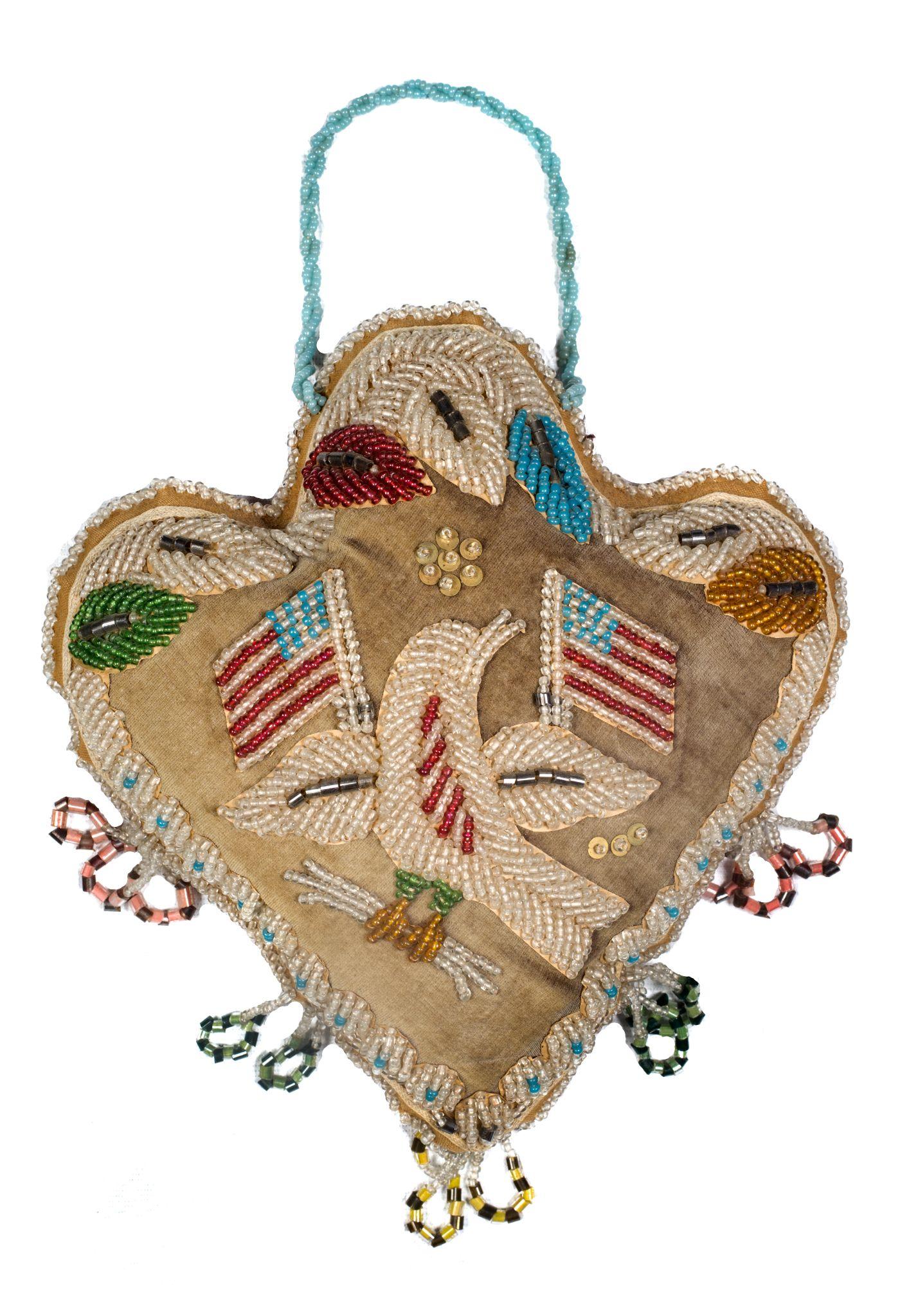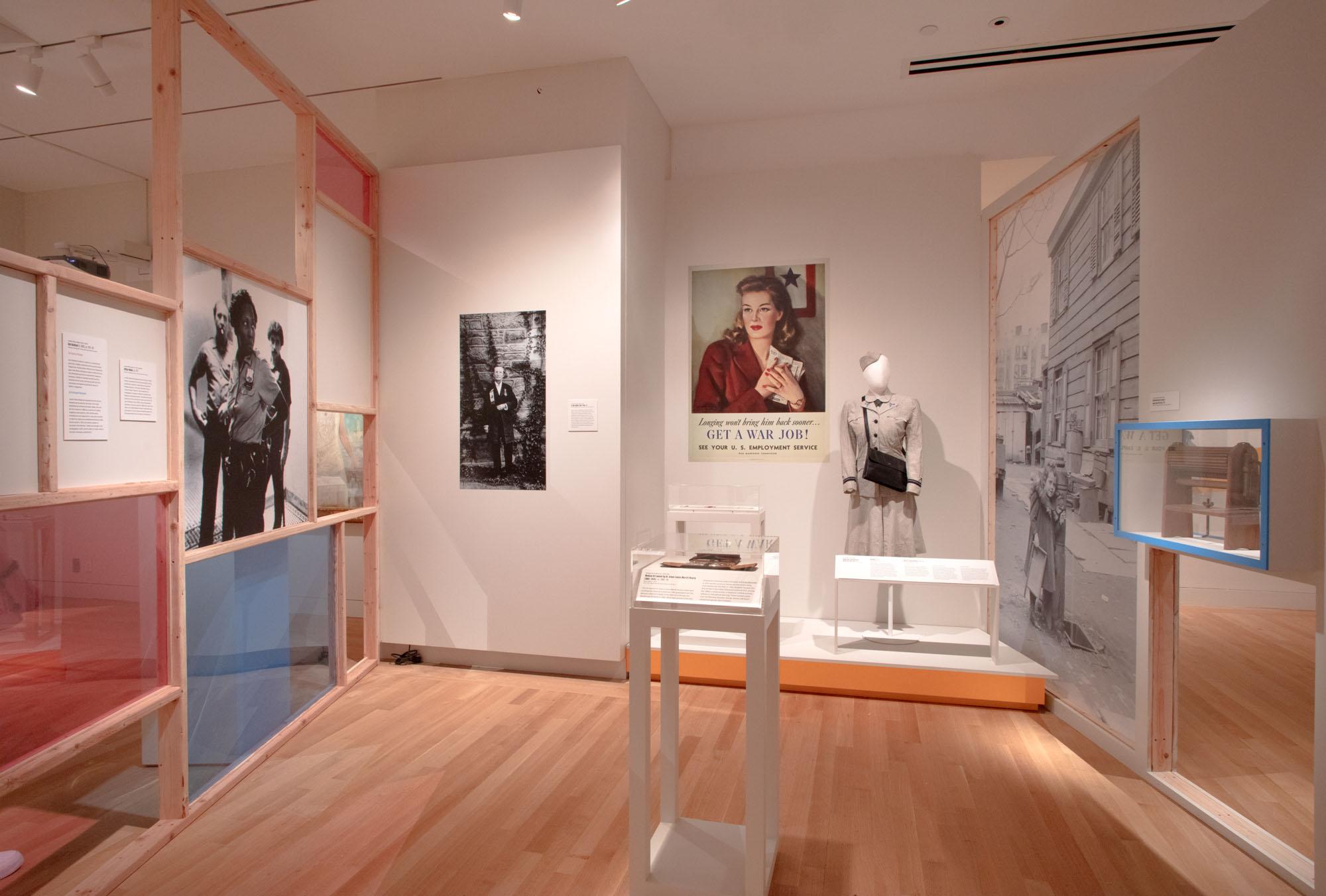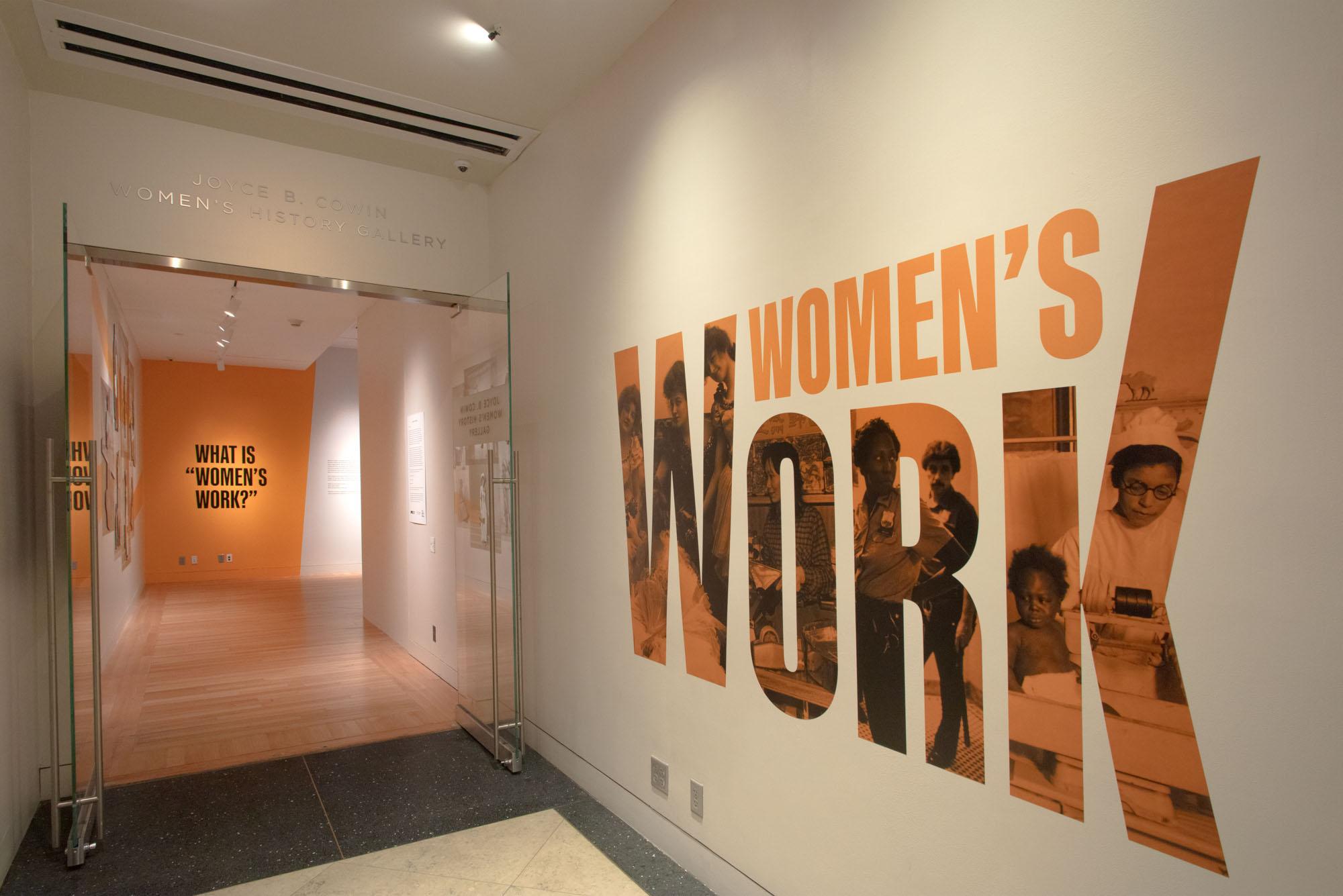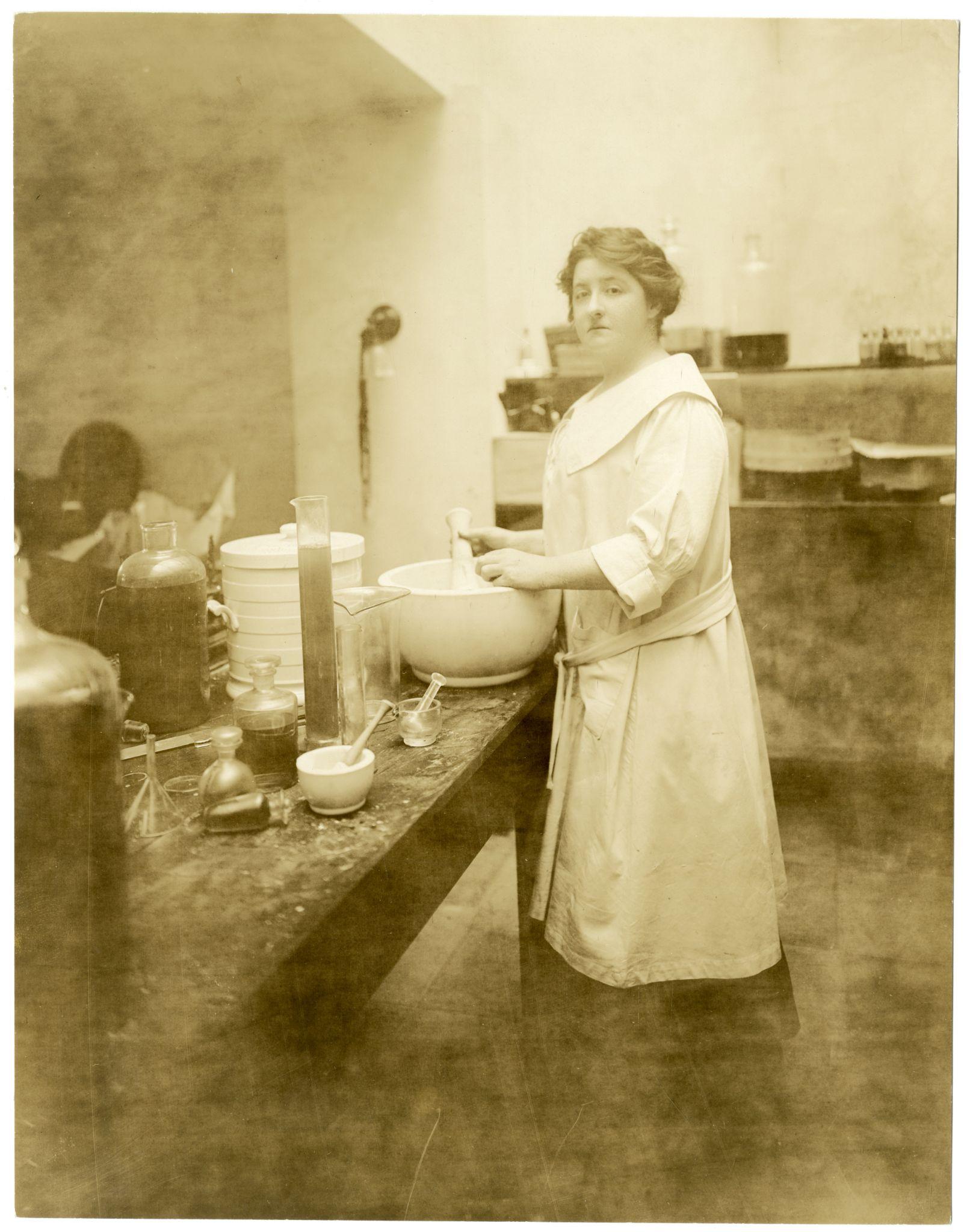At NYHS, “Women’s Work” is Out and Female Fortitude is In


The satirical femtopia Greta Gerwig portrays in Barbie—complete with Issa Rae as president—has succeeded in its mission to captivate viewers with its laughable impossibilities, especially at a moment when sturdy steps toward gender equality seem to be disintegrating right before us. At The New-York Historical Society however, a three-hundred-year survey of archival objects presented by the Center for Women’s History illustrates that a matriarchy brimming with Rosie-the-Riveter bravado may not be as far-fetched as Gerwig’s irresistible film makes it seem.
Cleverly christening the show Women’s Work in a nod to the elusive nature of such a construct, the curators boldly reveal their intention: to probe patriarchal narratives and open new pathways into the past. Forty-five thoughtfully-selected objects comprise this punch of a show, proving that women have shrewdly adapted to their gendered sociopolitical milieu for generations to accomplish far-reaching goals. The show’s titulary term “blurs categorization,” a wall text argues. Indeed, for centuries, women have excelled in a plethora of jobs—some influenced by societal pressures, others chosen willingly. A timely display of female resilience presented at a moment when white women earn only 82 cents for every man’s dollar and women of color even less, Women’s Work unearths the resourcefulness, creativity, and endurance that characterizes the enterprising woman of the modern era.

“When we think about ‘women’s work’, we also have to think about which women we’re talking about and what the conditions of their labor would have been like,” says Anna Danziger Halperin, Associate Director of the Center for Women’s History. Females, Women’s Work announces valiantly, have always been workers. Even our bodies are factories, used for production. That in the year 2023, a truism like this one necessitates exploration via an exhibition is regrettable but true.
A photomontage of working women—featuring photojournalist Jessie Tarbox Beals with an unwieldy camera in hand, a Native refugee seeking new land, and a piano-playing street busker among them—welcomes visitors into the gallery space, interrogating the exhibition’s title from moment one. Enveloped by striped yellow walls emulating sunlight and augmented with compelling audiovisual materials, Women’s Work breathes new life into an extensive archive, spotlighting the remarkable yet lesser-known women of history. As one traverses through the main gallery, the diverse array of items on view jump somewhat abruptly across time period and labor force—a piece of bale cotton sold on the New York Cotton Exchange sits only feet away from a decorated food delivery bag from the pandemic—but collectively triumph, dismantling the patriarchal social constructs that once gave rise to the risible notion of “pink-collar jobs”.

An intricately beaded pincushion, hand-crafted by entrepreneurial Haudenosaunee women and sold as a souvenir to visitors of Niagra Falls, pulses with the spirit of Indigenous perseverance. A weathered, pocket-sized medical kit owned by a graduate of the nation’s first medical school for women encapsulates the hard-earned precedent Dr. Vicario set for female doctors today. A powerful photograph from 1989 featuring a withdrawn Black trans sex worker awaiting work in Manhattan’s Meatpacking District resounds with a vital truth: we nurture our talents to survive.
While the arduous struggle for women’s rights was often solitary and illicit, on other occasions it was public-facing and collaborative, as straightforward as banding together with other strong-willed women. “Everybody brought whatever they did best to the room,” says queer artist and activist Joy Episalla in a filmed interview with her longtime partner and fellow artist Carrie Yamaoka, featured in the exhibition. Co-founders of fierce pussy—a politically engaged artist collective born out of the AIDS crisis—the duo used every resource available to them, twisting their day jobs and their skillsets “around like a pretzel” to defend queer rights. In fact, it rarely felt like “work” the duo attest; they were fueled by a do-or-die rallying cry catapulting them ahead.

The exhibition’s most delightful highlights lie in its tongue-in-cheek captions which quote historical sources, humorously calling out the subtle sexism ingrained in the writers’ diction. The wall label next to a photo of American perfumer Ann Haviland—whose motto was allegedly “a perfume for every woman and to every woman her own perfume”—reads, “The Poetess of Perfume.” Originally written in mockery or praise? Hard to tell. Nearby, a bust of the famed nineteenth-century lesbian actress Charlotte Cushman is puckishly labeled, “A Better Man than Most Men.” While Cushman wasn’t the first woman to play a man, this critic was apparently dumbfounded by her persuasive performance. Jokes aside, the captions rightfully situate each woman—and the object representing her work—within the distorted political framework that sought to contain her.
For three centuries of American history, women of all colors, socioeconomic backgrounds, and abilities have adeptly pivoted their “work” at only a moment’s notice, driven by the pursuit of personal fulfillment and survival. They’ve rebranded dolls to advocate for woman’s suffrage (in the example of Rose O’Neill and her Kewpie dolls), left violent husbands to support aspiring female entrepreneurs (in the case of Mary E. Cobb), and endured forced labor rampant with sexual violence (in innumerable cases of the enslaved women working the sugar trade). Let us not forget, coping with trauma is work too. Though it may have taken New York’s oldest museum more than two hundred years to form a wing dedicated to unearthing these stories, never a moment is too late to make forgotten women shine. To the Center for Women’s History, well done.
Women’s Work is on view at the New-York Historical Society through July 7, 2024.
You Might Also Like
Quilted Portraits that Evoke the Racialized and Gendered History of Craft
Cortés Finds Beauty in Dichotomies of Pre-Colonial Endurance
Finally, The Hispanic Society Offer Staff a Worthy Contract Ending 8-Week Strike
What's Your Reaction?
Annie Lyall Slaughter is a writer and editor based in New York. She holds an M.A. in Cultural Reporting & Criticism from NYU and a B.A. in American Studies from UVA. Her art writing has been featured in Cultured, Testudo, ArteFuse, and other publications.

